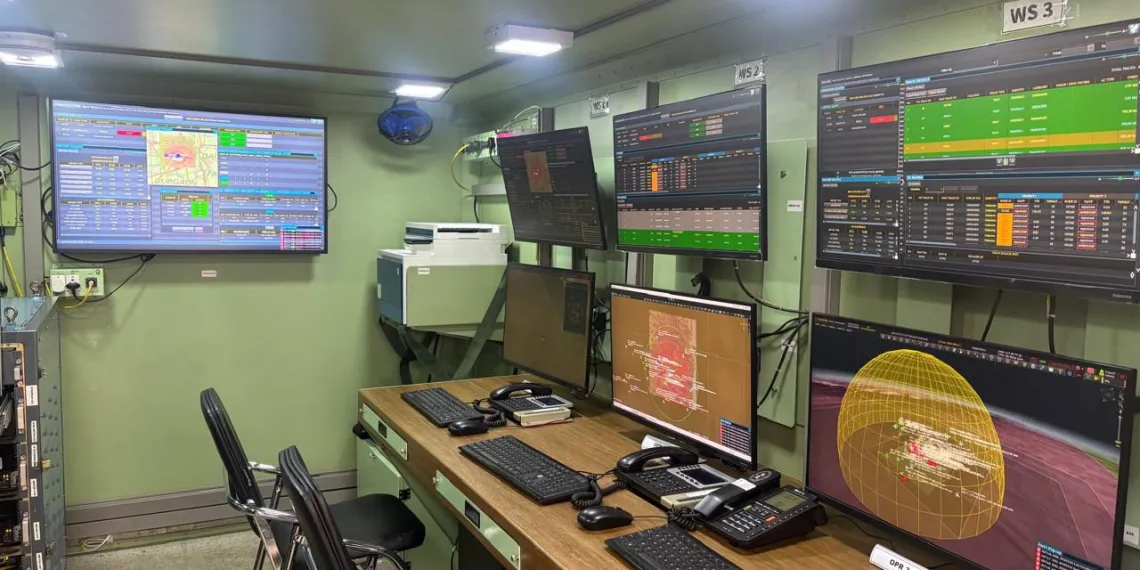In a remarkable stride towards modernising India’s defence capabilities, the Indian Army has achieved a major milestone through the development and phased induction of Project Akashteer. This ambitious initiative, a key part of the Army’s “Decade of Transformation” and “Year of Tech Absorption,” aims to provide India with a robust and responsive air defence network, meeting the demands of contemporary aerial threats with agility and precision.
Recently, a realtime validation of Project Akashteer was carried out simulating scenarios as expected in the future wars. A senior officer from military hierarchy witnessed the validation and appreciated the achievements of the project and commended the team involved in developing the Akashteer. He acknowledged their efforts and mentioned that it has realised a transformative leap in the Indian Army’s air defence capabilities.
Project Highlights and Strategic Advantages
Project Akashteer introduces a fully automated and integrated air defence system, offering unparalleled responsiveness and reliability. Here’s a closer look at the groundbreaking features of this transformative initiative:
1. Comprehensive Sensor Fusion: Akashteer has achieved “bottoms-up” fusion of all air defense sensors, integrating land-based sensors from both the Army Air Defence (AAD) and the Indian Air Force (IAF). This ensures a seamless and unified air picture that is accessible to the lowest operational units of Army AD, enhancing coordination and situational awareness across the force.
2. Automated Operations for Faster Response: In air defence, every second is critical. Akashteer’s automation replaces manual data entry, which previously consumed precious time. With no human input required, the system operates at maximum efficiency, allowing timely responses to fast-moving aerial threats. To illustrate, an aircraft at supersonic speeds can travel up to 18 kilometers in a single minute—Akashteer ensures that not a moment is lost in defence readiness.
3. Decentralised Engagement Authority: By decentralising the authority to engage hostile aircraft, Akashteer empowers units on the front lines, enabling rapid engagement decisions while maintaining controlled freedom to prevent friendly-fire incidents. This decentralisation is particularly critical for units stationed along the Northern and Eastern Commands, which are already equipped with Akashteer systems.
4. Advanced Real-Time Air Picture: Akashteer consolidates live data from various sources, including 3D Tactical Radars, Low-Level Lightweight Radars, and the Akash Weapon System, providing a multi-dimensional view of the airspace. This integrated picture is invaluable for both strategic planning and immediate threat response, giving Indian forces an edge in defending India’s skies.
5. Built-in Redundancy and Scalability: The system is designed with robust communication redundancy, ensuring connectivity even under adverse conditions. Additionally, Akashteer offers both software and hardware upgrade capabilities, making it a future-proof platform able to adapt to evolving technological and operational needs.
6. Flexible Deployment Across Formations: Recognising the varied operational needs, Akashteer has been tailored to provide mobile, adaptable platforms for strike formations, while pivot formations have been equipped with hardened, land-based systems. This flexibility enables the system to effectively support a range of tactical scenarios, reinforcing India’s defence on multiple fronts.
Induction Timeline and Future Readiness
Akashteer’s phased induction is already underway. Out of a total requirement of 455 systems, 107 have been delivered, with an additional 105 expected by March 2025. The remaining units will be delivered by March 2027, ensuring comprehensive coverage across the Indian Army’s defence units and formations.
Through Project Akashteer, the Indian Army is positioning itself at the forefront of air defence technology, ensuring a secure and vigilant airspace over India. This significant achievement underscores the commitment of India’s defence forces to innovate and enhance capabilities in response to ever-evolving security dynamics.


